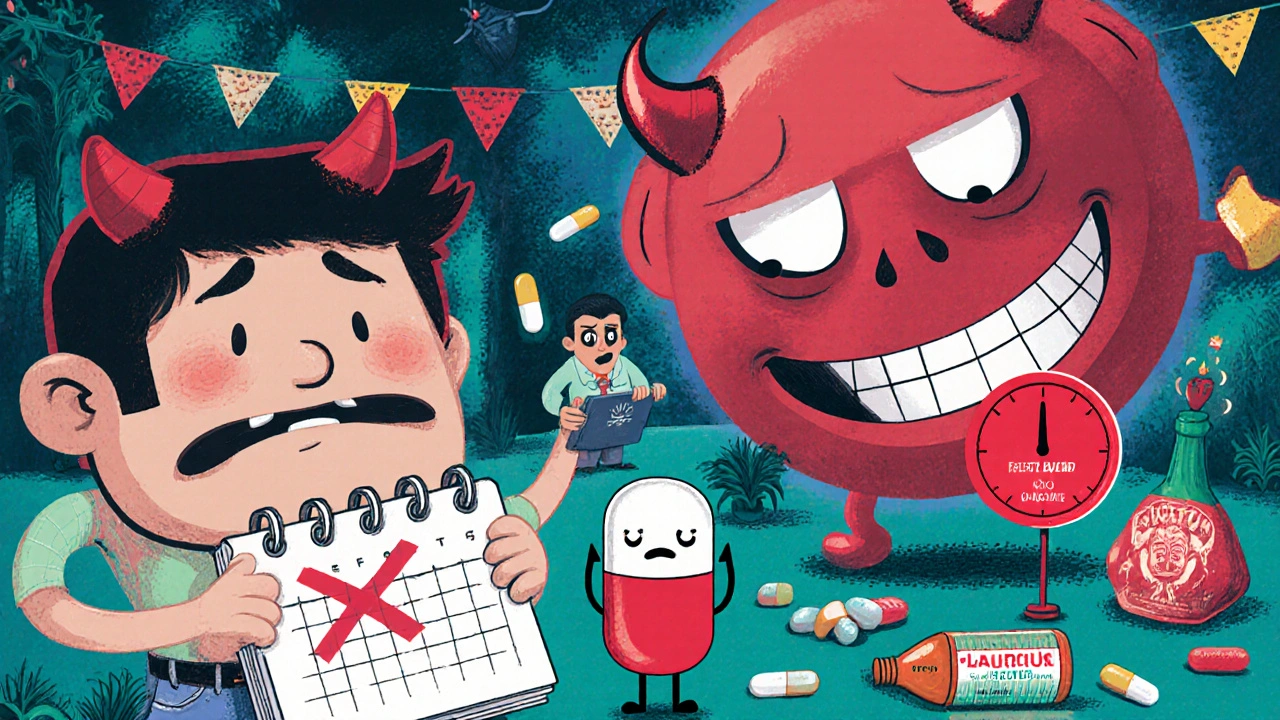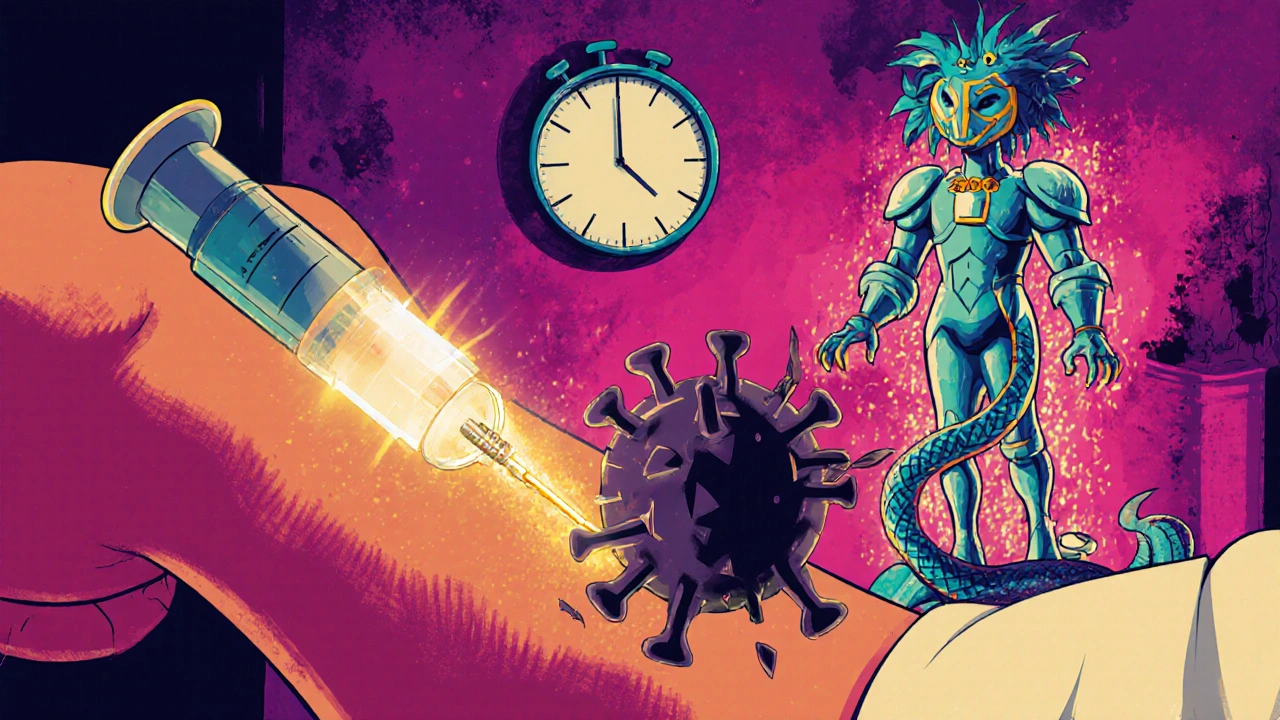When HIV first became a global crisis, a diagnosis often meant a death sentence. Today, thanks to antiretroviral therapy (ART), people living with HIV can expect to live long, healthy lives - as long as the medication works. But that’s not guaranteed. Behind every successful treatment is a quiet battle: viruses evolving, drugs clashing, and resistance quietly building. This isn’t science fiction. It’s daily reality for over 1.2 million people in the U.S. alone, and millions more worldwide.
How Antiretroviral Drugs Actually Work
Antiretroviral medications don’t cure HIV. They stop it from multiplying. HIV is a sneaky virus. It invades immune cells, copies its own genetic material, and turns those cells into virus factories. ART blocks that process at different stages. There are six main classes of drugs, each targeting a different step in the virus’s life cycle.- NRTIs (like tenofovir and lamivudine) trick the virus into using faulty building blocks, so its DNA chain breaks.
- NNRTIs (like doravirine and efavirenz) bind to the virus’s reverse transcriptase enzyme and jam it.
- Protease inhibitors (like darunavir) stop the virus from cutting its proteins into usable pieces.
- INSTIs (like dolutegravir and bictegravir) block the virus from inserting its DNA into human cells - the most critical step.
- Fusion inhibitors and CCR5 antagonists prevent HIV from even entering cells.
Modern treatment almost always combines two NRTIs with one drug from another class - usually an INSTI. This combo approach is called triple therapy. Why? Because hitting the virus from multiple angles makes it harder for resistance to develop.
Why Drug Resistance Happens - And How Fast
HIV mutates constantly. Every time it copies itself, it makes small errors. Most of these errors don’t help the virus. But sometimes, one gives it a survival advantage - like the ability to ignore a drug. If you miss doses, or take them inconsistently, the drug levels in your body drop. That’s when these mutant strains get a chance to take over.Some drugs are more forgiving than others. INSTIs like dolutegravir and bictegravir have high genetic barriers to resistance. It takes several mutations for the virus to escape them. That’s why they’re now the go-to first-line choice. In contrast, older NNRTIs like efavirenz can lose effectiveness with just one mutation - like K103N. That’s why many people switched away from efavirenz years ago.
Resistance isn’t always your fault. About 16.7% of new HIV diagnoses in the U.S. in 2024 showed drug-resistant strains - meaning the person was infected with a virus already resistant to common drugs. That’s why resistance testing is mandatory at diagnosis. Without it, you might start on a regimen that’s already broken.
Drug Interactions: When Your HIV Meds Clash With Everything Else
People with HIV often take other medications - for high blood pressure, cholesterol, depression, or even just sleep. But many antiretrovirals interact dangerously with them.Boosted protease inhibitors (like darunavir with ritonavir) are especially troublemakers. They slow down how your liver breaks down other drugs. This can cause toxic buildup. For example:
- Simvastatin (a cholesterol drug) can cause severe muscle damage when taken with boosted PIs - it’s a hard no.
- Midazolam (a sedative) can become dangerously strong, leading to breathing problems.
- Some antidepressants, anti-seizure drugs, and even herbal supplements like St. John’s wort can interfere.
INSTIs are generally cleaner. Dolutegravir and bictegravir have fewer interactions. Doravirine, a newer NNRTI, is even better - only 12% of users need dose changes compared to 35% on efavirenz.
That’s why tools like the Liverpool HIV Interactions Database and NIH’s HIV Drug Interaction Checker are used daily by clinicians. But not every clinic has easy access. Rural providers often struggle to get up-to-date guidance, increasing the risk of dangerous combinations.

The Rise of Long-Acting Treatments - And Their Hidden Risks
Gone are the days when you had to swallow a handful of pills every morning. Now, there are monthly injections like Cabenuva (cabotegravir + rilpivirine) and, starting in 2025, a twice-yearly injection being tested in trials. For many, this is a game-changer. In the ATLAS trial, 94% of people preferred injections over pills.But here’s the catch: if you miss an injection, the drug levels drop slowly - over months. That creates a perfect storm for resistance. The virus isn’t fully suppressed, but it’s not completely gone either. It’s stuck in a gray zone where mutations can emerge. Dr. Sharon Lewin from the University of Melbourne calls this the "silent resistance" risk of long-acting therapies.
Even prevention is changing. Lenacapavir, a long-acting injectable, was approved for treatment in 2022 and is now recommended by WHO for HIV prevention in 2025. It’s given every six months. But if someone starts PrEP with this and gets infected without knowing - because testing isn’t done right before the first shot - they could be exposing the virus to a single drug at suboptimal levels. That’s how resistance starts.
What Happens When Resistance Wins
When a regimen fails - viral load rises, CD4 drops - you don’t just switch drugs. You go back to the lab. Genotype testing shows exactly which mutations are present. Then, based on that, your provider picks a new combo.For multi-drug resistant HIV, options are limited. That’s where newer drugs like lenacapavir come in. Approved in 2022, it works differently than older drugs. In the CAPELLA trial, 83% of people with heavy resistance achieved viral suppression after 26 weeks. It’s a lifeline.
But even that’s not forever. ViiV Healthcare’s experimental drug VH-184, tested in early 2025, showed promise against strains resistant to dolutegravir and bictegravir. In a phase 2 trial, it dropped viral load by 1.8 log10 in just 30 days. That’s the future - drugs designed to outsmart resistance before it even spreads.

Real People, Real Struggles
Behind the data are real lives. On Reddit’s r/HIV, users talk about missing doses because efavirenz gave them nightmares. Others switched from tenofovir because their bones ached. One person got infected with HIV despite taking Truvada daily - and testing showed the M184V mutation, the same one that makes lamivudine useless.Abacavir works well for many, but if you carry the HLA-B*5701 gene, it can cause a deadly allergic reaction. That’s why every person starting HIV treatment gets tested for it before the first dose. It’s not optional. It’s life-saving.
And then there’s cost. Generic tenofovir costs $60 a month. Brand-name Truvada? $2,800. But in people who’ve already developed resistance, switching to generics isn’t safe. The virus might be waiting to explode.
What You Need to Know Now
If you’re on ART:- Take your meds exactly as prescribed - no exceptions.
- Get resistance testing at diagnosis and if your viral load becomes detectable again.
- Tell your provider every medication, supplement, or herb you take - even if you think it’s harmless.
- Don’t stop or skip injections if you’re on long-acting therapy. Missing one could cost you future options.
- If you’re on tenofovir and have bone or kidney issues, ask about switching to abacavir or TAF.
If you’re starting treatment today, your best bet is a regimen with dolutegravir or bictegravir. They’re effective, well-tolerated, and have the lowest resistance rates. In 2025, 78% of new U.S. patients start with INSTI-based regimens - up from just 32% in 2015.
Resistance isn’t inevitable. But it’s always lurking. The tools to fight it are better than ever - but only if we use them right.
Can you develop resistance even if you take your HIV meds every day?
Yes, but it’s rare with modern regimens. If you take your meds perfectly and have no pre-existing resistance, the chance of developing resistance in the first year is under 1%. But if your regimen includes a low-barrier drug like efavirenz, or if you have undiagnosed transmitted resistance, the risk goes up. INSTIs like dolutegravir and bictegravir are much harder to resist - even with perfect adherence, resistance rates are under 0.5% at two years.
Is it safe to switch from brand-name to generic HIV drugs?
For people who are treatment-naïve and have no resistance, switching to generics is safe and common. Generic tenofovir and lamivudine work just as well as branded versions. But if you’ve had treatment failure or developed resistance, switching could be dangerous. Generic versions don’t always have the same absorption profile, and even small changes can trigger viral rebound. Always consult your provider before switching.
Why do some HIV drugs cause bone loss?
Tenofovir disoproxil fumarate (TDF) is linked to reduced bone mineral density. It affects how phosphate is handled in the kidneys, leading to gradual bone thinning. Studies show 40% more bone loss over 144 weeks compared to abacavir. Tenofovir alafenamide (TAF) is a newer version that delivers the drug more efficiently, so lower doses are needed - and it’s much gentler on bones. If you’re on TDF and have osteoporosis or fractures, ask about switching to TAF or abacavir.
Can you take HIV meds with alcohol or marijuana?
Moderate alcohol doesn’t interfere with most HIV drugs, but heavy drinking can damage your liver and make side effects worse. It can also hurt adherence - if you’re hungover, you’re more likely to miss a dose. Marijuana doesn’t directly interact with antiretrovirals, but it can worsen mental health side effects like anxiety or depression, especially with efavirenz. Always be honest with your provider about substance use - it helps them choose safer regimens.
What happens if you miss a dose of a long-acting injection?
Missing one injection puts you at risk of developing resistance. Unlike pills, which clear from your body quickly, long-acting drugs like cabotegravir stay in your system for months. If you miss a shot, drug levels drop slowly - enough to suppress the virus a little, but not enough to stop it completely. That’s the perfect environment for resistant strains to grow. If you miss a dose, contact your provider immediately. You may need oral meds as a bridge until your next injection.
Are there any new HIV drugs coming that can beat resistance?
Yes. VH-184, a next-generation INSTI, showed strong results in early 2025 against strains resistant to dolutegravir and bictegravir. It’s being tested in phase 3 trials as a six-month injectable. Lenacapavir, already approved, works on a completely different target and remains effective against many multi-drug resistant strains. These drugs are changing the game - they’re designed to stay ahead of mutations before they spread.
Drug resistance and interactions are the silent threats behind every HIV treatment plan. But with better drugs, smarter testing, and more awareness, they’re no longer unbeatable. The key isn’t just taking pills - it’s understanding how they work, how they fail, and how to protect yourself from the next mutation before it happens.


Written by Connor Back
View all posts by: Connor Back